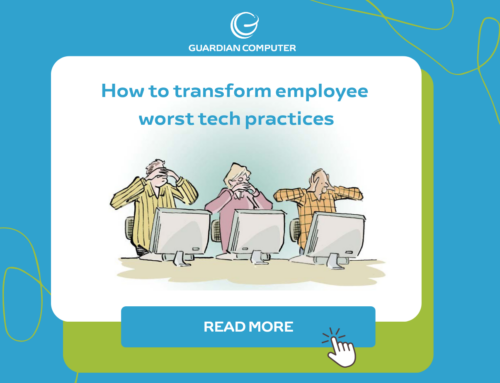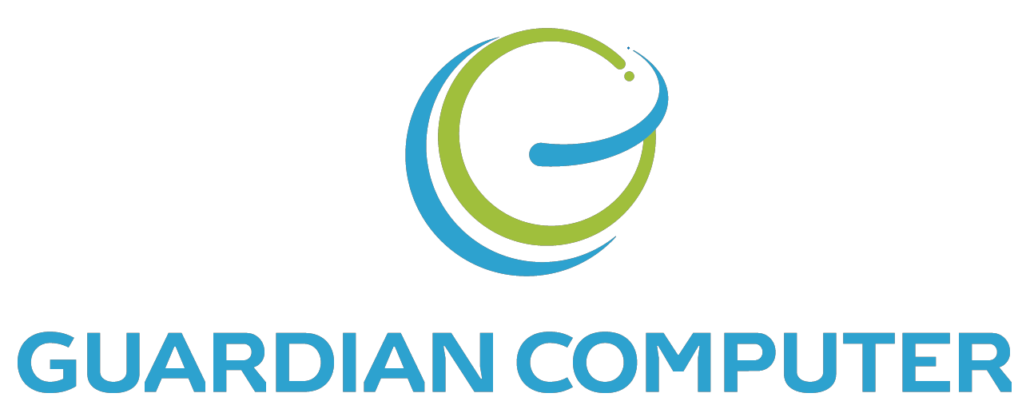In today’s age of digital transformation, new and sophisticated cyberattacks, adoption of VPNs for public Wi-Fi usage, and more, it can be hard to keep track of all the latest technology trends, challenges, and solutions. Viruses are one issue in particular that consistently receives attention but is plagued with myths and misconceptions.
The concept of the computer virus has transformed into a catch-all term for a variety of programs that could damage your computer. In reality, when most people say “virus,” they really mean anything with malicious code.
So what do you actually need to know about viruses today, and what computer virus myths can you disregard? To be able to protect your company computers and data, you need to be aware of the popular types of malware you might see, as well as warning signs that point to an infected device.
“The most common misconception is that it is not going to happen to me or that if it does happen, it won’t be that bad,” says Charles Andrews (better known as Andy), our cybersecurity expert. We’re here to share his insights and the critical information you need to know about computer virus myths, threats, symptoms, and solutions.
Different Types of Infectious Malware
Awareness is a critical component in combating viruses and malware. One harmful computer virus myth is that certain types of devices (namely, Apple products and mobile devices) aren’t susceptible to malware.
All devices can potentially be infected by malware, and there are many different types of malware that leaders and employees need to watch out for. That’s why it is essential to train all end users on how to avoid different types of malware, popular tactics used to infect devices, and how to detect when there is a problem.
The following are some of the most common types of infectious malware that could infiltrate your devices.
Viruses
The type of malware with the most name recognition is the virus. A virus is a piece of code that is capable of copying itself, typically resulting in a detrimental effect on the screen of the infected computer.
Getting a virus can be as simple as a user opening an email or clicking on a link that executes a malicious program. From there, the virus will multiply and attack varying aspects of the computer.
Viruses often come from an infected webpage or a phishing email. It is important to remember that secure websites should have “https” at the beginning of the URL. If you just see “http,” think twice before visiting the site and do not enter any of your information.
Worms
Worms are able to replicate with incredible speed. Once they are inside your network, they’ll seek out any available weak computer system that’s online and try to infect it.
Worms work autonomously, and they can transfer themselves from one computer to another without any interaction from users. This makes them one of the more dangerous types of malware and very difficult to detect.
Trojans
A trojan’s purpose is to get itself installed onto your computer via a seemingly innocuous download, email attachment, or ad. Once installed on your computer, the hacker will have remote access to your network via your device.
Trojans are named as such because they seem harmless and work hard to remain undetected on your computer. They want to remain inconspicuous so that they can be an anchor point to attack other devices, making them especially threatening for company networks with many connected devices.
Botnets
Botnets are a group of infected computers that respond to the call of a botherder or command-and-control server. Botnets’ end goal is to attack en masse against a target in what is referred to as a distributed denial of service attack (DDoS).
A DDoS attack involves one or more attackers attempting to make it impossible for a service to be delivered. The attackers will drown a server in requests so that it will cease to function.
Ransomware/Crypto Viruses
This type of attack is rapidly growing in popularity. With ransomware/crypto viruses, hackers will encrypt your data and then ransom it back to you for a price. There are many different ways that hackers will attempt this: sometimes they use botnets, while other times they may use a virus.
Warning Signs of an Infected Device
One of the most damaging computer virus myths is that antivirus software offers a complete solution to infectious malware. While antivirus software protects against viruses, it won’t keep you safe against trojans or botnets, for instance.
This is why widespread awareness and proactive prevention are crucial. The sooner you identify a malware infection, the sooner you can remove the malicious code and limit the damage it causes. “Early detection and prevention can’t be overstated in their effectiveness,” says Andy.
No one thinks it will happen to them, but cybercriminals know to target smaller businesses whose cybersecurity may not be as robust. Andy adds, “It’s much better to catch one of these issues early than it is to try and clean it up after.”
The signs of an infected device can differ depending on the type of malware that has infected it. Here are a few common warning signs to watch out for.
Blue Screen of Death
The Blue Screen of Death, or BSOD, is a name that’s been given to error messages that you will typically see on a Windows computer. If you see the Blue Screen of Death, it means your computer can’t continue with what it was doing and will likely shut down and try to restart.
Typically, a BSOD does not mean you have a virus. If it only happens once, it could be a hardware issue. But if it’s happening frequently, it is possibly the result of a virus.
Increased Overheating or Fan Speed
Is your device overheating during normal activity or inactivity? Is your computer’s fan running higher than normal, even though you don’t have any programs open? If so, this may be a sign that malware is on your device.
In this case, a virus or worm may be causing your device to work harder than it needs to, though it appears not to be doing anything.
Slow Performance
If you notice that your computer or smartphone takes a long time to start running or to open programs, it may be a sign that you have a virus. Before assuming that malware has infected your device, first check to see if you have ample space on your hard drive.
If you do have space and your computer is still running slowly, the culprit could be a damaged hard drive. If the hard drive is not damaged, however, it is highly likely that some kind of malware is infecting your computer.
Other signs of malware may include: frequent pop-ups, error messages, missing or damaged files, system crashes, or unprompted computer restarts. If you notice any of these problems or anything else unusual, Guardian Computer can help.
Guardian Computer: Your Computer Virus Myth Buster and Problem Solver
Our IT experts are here to tackle your technology needs, including everything from malware detection and protection, to Helpdesk support, to fully managed IT services. We are available to answer any questions or concerns you may have, solving issues with fast, friendly customer service. We also provide proactive monitoring to spot issues quickly and prepare for your future needs, so you can have peace of mind about your IT.
Contact us to get started with Guardian today and keep your data protected.







